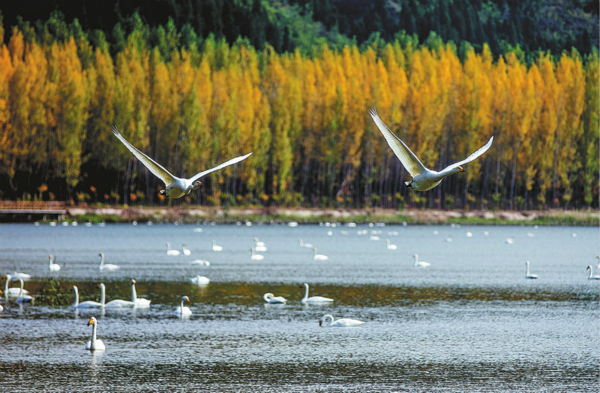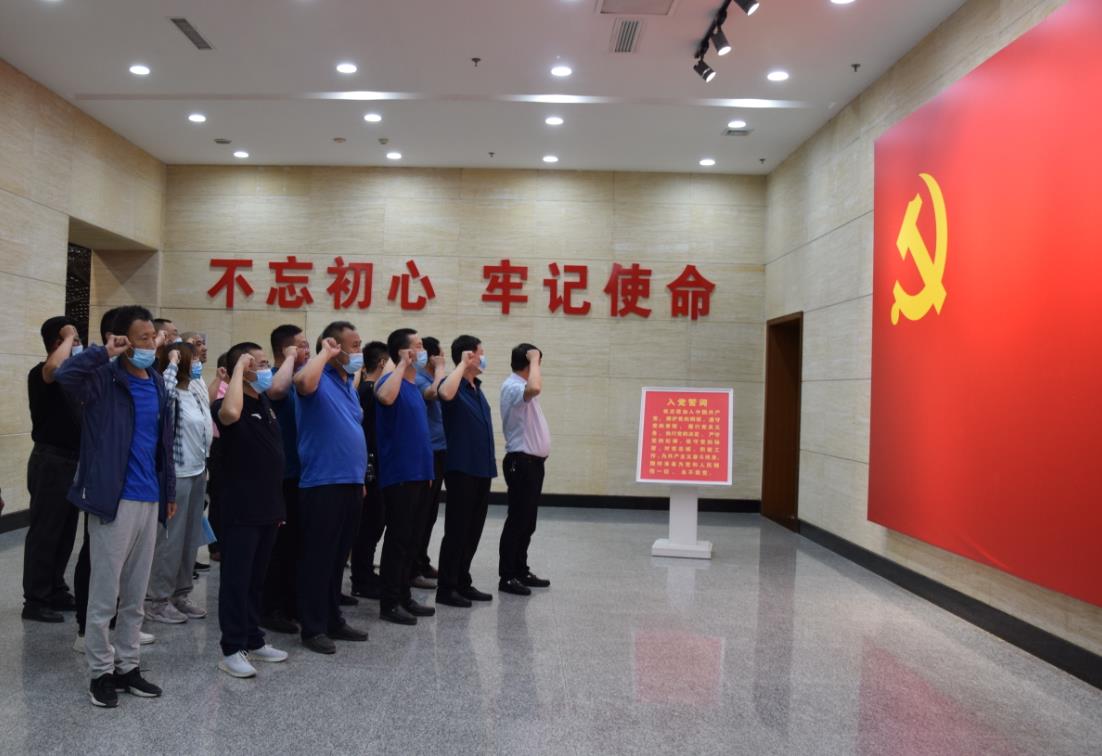
The Yellow River wetland in Pinglu county is now a habitat of migrant birds like swans, thanks to its improved environment. LIU WENLI / FOR CHINA DAILY
While the Yellow River is praised as the mother river of China that nurtured Chinese civilization, it has also been frequently blamed as the source of disaster throughout history.
Severe floods and soil erosion are big challenges to local life and development on the Loess Plateau in Shanxi and Shaanxi provinces, where the river serves as the provincial border.
Due to the decrease of forest and grassland areas in past millennia as a result of human activities, huge amounts of soil and silt have washed been away from the Loess Plateau, meaning yellow earth, leading to the name Yellow River.
The soil erosion causes severe flooding and makes the land increasingly infertile.
To solve the problem, the State has built dozens of water conservation projects along the body and tributaries of the Yellow River in Shanxi and Shaanxi over the past seven decades.
For local governments and residents in Shanxi province, the best effort to protect the river is the decadeslong greening campaign.
In Yonghe county, the Qiankunwan Bend is praised by tourists as "one of the most beautiful bends of the Yellow River". The river is surrounded by lush forest-covered mountains and hills.
The picturesque sight is radically different from decades ago and is a result of the local people's painstaking efforts.
Wang Aimin, head of the county's forestry and grassland administration bureau, said planting trees in the area had been regarded as impossible by some experts.
"It was difficult to find soil on the rocky mountains as soil had been washed away after centuries of water erosion," Wang said.
"To solve the problem, our workers carried soil onto the slopes of the mountains and hills. Tree-planting tools, saplings and water were also transported by manpower," the official said.
To better collect the precious rainfall, saplings are planted in deep holes. The soil near the trees is covered by polyethylene sheets to prevent evaporation.
Such measures substantially improved the survival rate of trees, according to Wang, who added more areas near the Yellow River are covered by trees thanks to these measures.
In the city of Lyuliang, the Lyuliang Mountains are the main source of soil discharged from Shanxi into the Yellow River.
"Lyuliang is among the largest sand producer for the Yellow River because of its lack of vegetation," said Wang Liwei, mayor of the city.
The official said Lyuliang's greening campaign has been won inch by inch over the decades.
"Farmers were mobilized to plant trees near their homes at first, then in the valleys and on the slopes,"Wang said.
Over the past three years, the amount of soil discharged from Lyuliang into the Yellow River was reduced by nearly 40 million metric tons a year on average, according to the mayor.
In Shanxi as a whole, more than 1.4 million hectares of land along the Yellow River and its tributaries has been made verdant, according to Sun Pengcheng, an official of the Shanxi Environmental Protection Department.
Shanxi issued a regulation in 2016 requiring more than 3.6 million hectares of forest zones to be developed for the Yellow River drainage.
By YUAN SHENGGAO
 山西路桥:党建引领 建好“四好农村路”山西路桥建设集团党委扎实开展“党建质量提升年”,实施“六大工程”,立足“十四五”高质量、高速度、高效益发展的战略基点,全面提高党建质量和党建引领发展水平,为打造“国内一流的交通基础设施投资、建设、施工现代化企业集团”提供坚强政治保障。
山西路桥:党建引领 建好“四好农村路”山西路桥建设集团党委扎实开展“党建质量提升年”,实施“六大工程”,立足“十四五”高质量、高速度、高效益发展的战略基点,全面提高党建质量和党建引领发展水平,为打造“国内一流的交通基础设施投资、建设、施工现代化企业集团”提供坚强政治保障。
 常住人口3491万 山西人口普查数据"出炉"山西省统计局向社会通报山西省第七次全国人口普查主要数据。数据显示,山西省常住人口为34915616人,比2010年(第六次全国人口普查数据,下同)减少2.23%,年平均减少0.23%。山西省常住人口总量减少,主要受人口流动变化等因素影响。
常住人口3491万 山西人口普查数据"出炉"山西省统计局向社会通报山西省第七次全国人口普查主要数据。数据显示,山西省常住人口为34915616人,比2010年(第六次全国人口普查数据,下同)减少2.23%,年平均减少0.23%。山西省常住人口总量减少,主要受人口流动变化等因素影响。